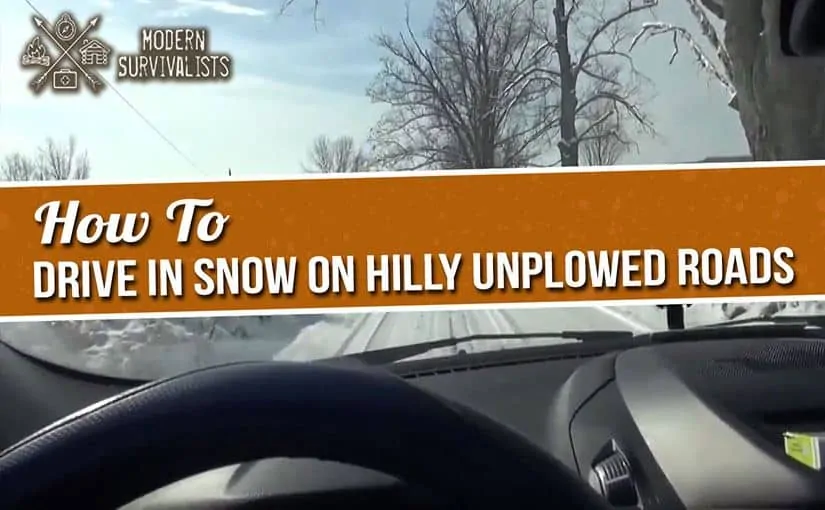In the video below, I demonstrate driving a modern 2 wheel drive, front wheel drive vehicle on some hilly unplowed snowy roads. I also will show why in some circumstances traction control can limit your ability to climb or get unstuck. There are certain situations where turning traction control off can actually help.
When I filmed this video, I was using tires that were completely worn out. They had approx. 62,000 miles on them (rated for 50,000) and were due to be replaced later the same week. Since we happened to get some fresh snow a few days before the new tires arrived, it was a good opportunity to demonstrate driving with very poor traction. While its always best to have tires much better suited for snow driving, this video shows that these strategies will even help with poor gripping tires.
Smooth & Gradual / Graceful Inputs to Avoid Slides
The biggest key to winter driving in the snow is to be smooth and graceful with all inputs to the car. Accelerate smooth, brake smooth, and turn smooth and gradual. Any jerky input will increase the chances the tires will lose traction and slide.
When you are sliding, releasing both the brake and throttle will usually allow the tires to regain traction. If you need to slow down, you can then reapply the brake gently. If the slide resumes, repeat this process, gently tapping the brake until control is regained.
This is especially important if you need to steer the vehicle away from an obstacle during the slide. When the brake is being held firmly during a slide, the front tires cannot rotate. And when they cannot rotate, they cannot steer the vehicle. In a previous post, How to Control a Slide on Icy Surfaces, I used a viral video of a mass pile-up to illustrate this. It made an excellent example of showing the difference between vehicles that did use this technique, and those that did not, on the same stretch of road.
Traction Control – How it Works & When it Can Actually Hinder Traction
Traction Control on newer vehicles is very sophisticated. It’s purpose is to prevent the driver from spinning the tires. It detects the moment your wheels begin to break loose, and it immediately reduces power to the wheel. Usually this is considered a good thing. Why? Because uncontrolled wheel spin can cause the vehicle to start sliding. Additionally, on dry pavement conditions, you will get more traction without spinning the wheels.
However in some conditions, including long snowy climbs, some wheel-spin can actually increase the total traction and help the vehicle maintain momentum. The problem with using traction control in these conditions is that it as soon as it detects a wheel slipping, it reduces the power to the wheels. When it is very slippery out, the traction control computer continually reduces power until you reach the point there is virtually zero power to the wheels. Even with the pedal to the floor, the vehicle will just act like you are not pressing the accelerator at all.
In the video above I show this type of situation, and then how to disable traction control. With the traction control disabled, I was then able to start moving and gradually build enough speed to climb the hill.
The vehicle will also want to slide somewhat when there is wheel spin. With some practice you can learn to control this. Generally, as the vehicle starts to pull left, you counter steer to the right, and vice versa. If the slide starts to get out of control, simply let off the throttle until you regain control of the vehicle.


One thought on “How to Drive in Snow on Hilly Roads”